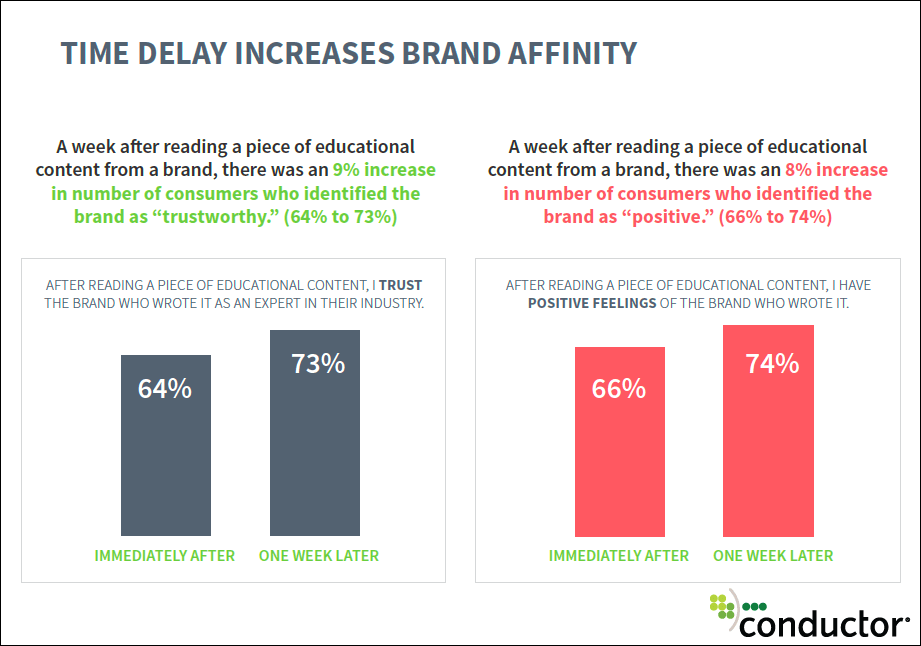![Social Media Not a Ranking Factor, Bucketing Keywords, Being Customer First, & More [Content Roundup]](https://www.kateneuens.com/wp-content/uploads/2017/08/Social-Media-Not-a-Ranking-Factor-Bucketing-Keywords-Being-Customer-First.png)
Why Social Media Is NOT a Search Ranking Factor [Article]
I’ve been saying what this article is touting for a long time: while social media is a great tool and can be incredibly useful in promoting your content, it is not a ranking factor. I love this quote from the article:
In the case of social signals, it’s likely that large exposure on social media increases the chances that website owners will see the content, thereby increasing the opportunities that they will link to it from their own content.
Basically, what it comes down to is that Google can’t ascertain why you liked a brand on Facebook. Do you really like the brand? Or did you just like the picture they posted? Google doesn’t know so that’s why they have said, explicitly, they don’t use social media as a ranking factor.
Now, all of that being said, I still think social media is an incredibly robust, useful, and informative tool. Use it right, and it can have a tremendous impact on your website.

I’ve read about this kind of strategy for keyword tracking by refining by searcher intent. By using this method you can see how your keywords rank depending on where they are in the intent process. Are you keywords really killing it for transactional phase? Or are you really doing well in the local bucket? This can help you refine and figure out where your weaknesses and strengths are. The article also offers an intent modifier bucketing template.
I’ve always used STAT for this kind of research, but SEMRush and Moz have tools you can use as well.
4 Psychology Insights That Will Help You Build Links [Listicle]
This article should give you some new tactics to use when doing link building outreach. I’m trying to incorporate some of these into my outreach strategies. Here are the 4 insights they recommend using in your next email:
- Convincing the recipient that they aren’t going to be wasting their time. Cut to the chase about what you’re selling so people can see the opportunity.
- Sometimes you need to underplay what you’re selling. Don’t say your new tool is the best thing ever made, because then the recipient’s belief bias kicks in.
- Use the word “because” in the first sentence of your email. Show why you are emailing them right away.
- Make sure you impress on the recipient that they are human being free to make their own decisions. Don’t trick yourself into thinking that you can brainwash them.
Educational Content Makes Consumers 131% More Likely to Buy [Research]
The title and the following quote pretty much sum it up for this study from Conductor:
According to the new research, consumers are 131% more likely to buy from a brand immediately after they consume early-stage, educational content.
So what does this mean? You need to create content that answers you customers questions and provides real value to potential users and customers.
Here’s some more great information from Conductor’s study:

Basically, create educational content.
Five Questions Brands Need to Answer to be Customer First in the Digital Age [Article]
McKinsey is a great business read. Some of their stuff can be more retail focused, but they often put out engaging and interesting reads for people in the digital sphere. This article is a good reminder of the questions we should be asking ourselves to keep the customer first and foremost in our minds. Whether it’s about your data or the customer journey, these questions can help you refocus on the important aspects of your customer.
Random Fun Find: How Sweden Is Fast Tracking Refugees Into The Workforce
Sweden’s mindset about immigration and refugees and what they are doing for this population is commendable.
New arrivals are actively encouraged into work, put on a fast-track to employment, matched with jobs in sectors where Sweden needs workers, and given training and mentoring.
This program–called Snabbspåret–is based on a simple formula. Newcomers who already have relevant skills and experience skills are given jobs in industries that are facing a shortage of workers.
Snabbspåret, which I’m not even going to try and pronounce, has been so successful they are looking to expand it into different areas. Way to go Sweden!